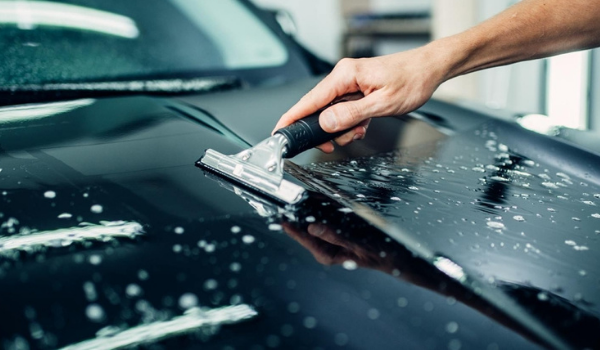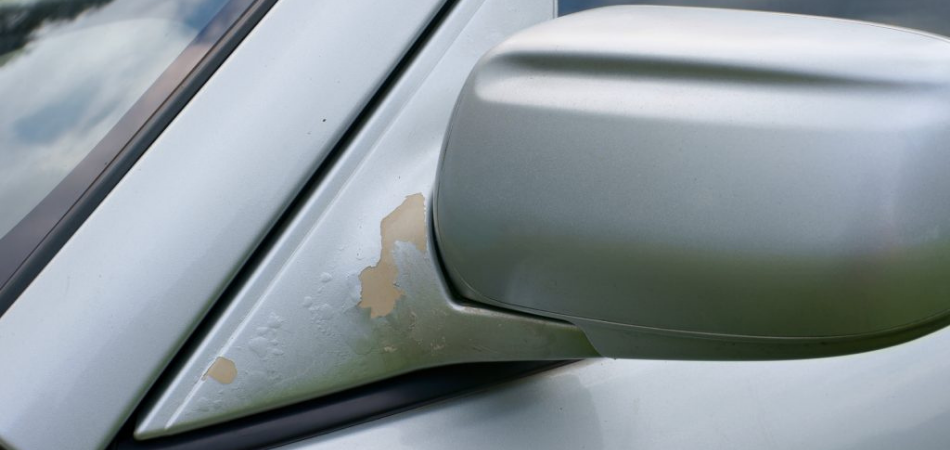Most cars take a lot of abuse from outdoor elements, and the resulting rust can be a huge disappointment. But what causes a paint chip to rust, and how long does it take a paint chip to rust? This is all you get to learn from this page.
It doesn’t take long for the paint chip to rust, more like less than a week. Most vehicles have a layer of paint specially designed to protect the metal beneath. However, if your vehicle suffers a chip or a scratch that exposes the metal underneath, the layer of protection is gone and the metal will oxidize to form rust.
Also, the time it takes for a paint chip to turn into a rusty chip depends on a few variables. The first variable is the type of metal under the paint (aluminum, steel or iron). Steel and iron are found in most cars today, and they both have similar formation periods for rust.
If you want your vehicle to look healthy for as long as possible, rust is your enemy. Rust forms when oxygen and iron molecules mix, creating a chemical reaction between iron and water. The longer this reaction takes place, the more rust there will be.
Therefore, you must do all you can to repaint any paint chip you notice in your car as early as possible.
When Does a Paint Chip Occur and What Are the Causes?
Chips are small scratches or cracks on the surface of metals. They can differ in depth, length, and width. Chipping occurs when the paint no longer adheres sufficiently to its support and comes off in the form of more or less large scales.

When a chip happens, there will be a space between the paint and the metal of your car, bike, gate, furniture, or other objects. The process of rust formation begins immediately in the opening between the paint and the metal.
The good thing about a paint chip is that it is easier and cheaper to get fixed than most other forms of damage. Repairing chipped paint is often a simple task of buffing it out or fixing it with a little polishing compound.
However, if a scratch is large or the problem is ignored, it could require a new paint job. New paint jobs will cost much more depending on the type of metal and the paint that is required – So don’t ignore scratch just because it’s small.
Furthermore, rust caused by chipping paint can deteriorate the body of the metal object completely. A paint chip can become a big problem, and each chip must be treated as such. Here are the common causes of chipping:
Contents
1. Exposure to Extreme Heat and Sunlight
Harsh weather conditions can be a murderer to paint. Weather is a very important factor in the health of a paint. Extreme heat and sunlight can seriously damage the paint. The paint will begin to lose shine, bubble, and lose strength.
If your car, for instance, is regularly exposed to extreme heat conditions, such as sitting in a parking lot for eight hours a day, consider using a protective car cover. Weakened paint due to sunlight is more likely to chip, and even minor marks could cause paint to chip if it is weak enough.
2. Winter
Colder climates are where the weather affects paintworks. Cold weather can weaken enamel, ruin wax, and expose the paint to the horrors of winter weather. Salt is a major enemy of metals. It is an oxidation catalyst, and therefore, speeds up the rate of rust formation.
For a car, the wheels can lift chunks of salt and damage a car’s paint. But far worse than just causing paint scratches or chips, it also leads to rust. That’s why so many rust stains occur around the wheel arches, as this is where salt is most likely to hit.
3. Hazards
Some accidents may cause scratches or chips on the paint surface. Your fingernails may scratch the paint off a metal unintentionally. Small stones(pebbles) can damage the paintwork. Even small particles of sand can strike the paint and leave it chipped.
Who has never hit a pole with their car causing them to get deep scratches? Or scraped the rearview mirror against a concrete wall or pole in a tight parking lot and nasty scratches damaged it. The scraping noise of the sheet still makes you shiver when you think about it.
How to Take Care of a Paint Chip?
These are what to do to preserve the life of the metal object in the case of chipping:

1. Strip the Metal Support
Metal stripping is a risky job that requires strict safety measures. To carry out stripping, it is mandatory to wear safety equipment including goggles, gloves, and a protective mask. The working environment must also be protected by covering the floor and all fixed objects with a tarpaulin or a plastic bag.
Also, Ventilate the room in which you are going to work as much as possible; if possible, work outdoors to avoid inhaling paint dust and the evaporation of stripping products that are harmful to health. Have you taken the necessary security measures? Now choose the stripping method that’s right for you. You have the option of thermal or chemical stripping.
- Thermal Stripping: This method involves burning the paint with a device called a heat gun. Under the effect of heat which can reach 650 °C, the paint flakes and crumbles easily. It remains only to scrape the paint with a spatula or a wire brush.
- Chemical Stripping: This technique is about applying a chemical stripper, a powerful product that tends to soften the paint. Spread a thick layer of stripper on the support then cover the entire surface to be stripped with a plastic bag to optimize the action of the stripper. Wait for a few hours then scrape off the paint with a wire brush and spatula. Do not forget to clean the materials which were used for chemical stripping with a solvent such as white spirit and to rinse them with plenty of water to remove all traces of toxicities.
2. Treat Rust
This step is necessary if your metal support has been exposed to oxidation elements and shows signs of rust. You must therefore apply anti-rust products to stop its expansion. You must first remove the traces of rust from the metal using citric acid or wipe it with a cloth sprinkled with soda crystals.
Then, clean and dry before applying the anti-rust product. Wear gloves and a protective mask. Do the job with a plastic fiber brush. Let the product dry.
3. Smooth the Metal Support
Use fine-grit sandpaper to smooth the metal surface.

4. Apply a Coat of Metal Primer
To ensure the durability of the paint, apply an appropriate primer and choose special metal paint. Spread a good coat of primer on all exposed surfaces and corners. Then, leave to dry.
5. Paint the Metal Support
You can paint your metal by hand with a roller or brush, or with a paint gun.
Conclusion
Don’t underestimate a paint chip. Rust can penetrate beneath the paint surface next to the affected area. As seen earlier, in unfavorable conditions, such as humidity and high temperature, rust can happen after a few weeks. It is therefore important to repair the damaged areas as quickly as possible.


